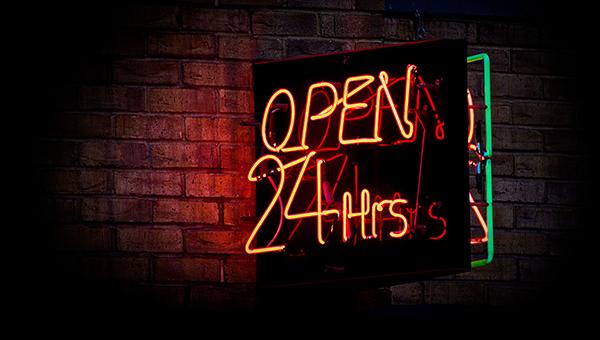Tenecteplase Feasible Up to 24 Hours After Stroke
The approach is viable and seems safe, but it’s unclear whether TNK is better than alteplase in this setting, one expert says.

Administering tenecteplase (TNK) up to 24 hours after an acute ischemic stroke caused by a large-vessel occlusion appears to be a viable option among patients selected with advanced imaging, the phase IIa CHABLIS-T study indicates.
The approach achieved major reperfusion without symptomatic intracranial hemorrhage (ICH) 24 to 48 hours after thrombolysis in 32.6% of patients using a dose of 0.25 mg/kg and 23.3% of patients using a dose of 0.32 mg/kg, Xin Cheng, MD, PhD (Huashan Hospital, Fudan University, Shanghai, China), reported at the International Stroke Conference (ISC) 2022 last week.
The study is limited by the lack of a control group that did not receive tenecteplase, but “these results are the first to be reported [for use of] thrombolysis with TNK in the extended time window,” Cheng said during her presentation. “It seems feasible to extend the time window of intravenous thrombolysis to 24 hours after ‘last known well’ through perfusion-imaging selection.”
More trial evidence is forthcoming, she noted. The lower dose has been selected for the larger phase IIb trial—CHABLIS-T II—that started in October, in which TNK will be compared with standard treatment in the extended time window. There are also at least three ongoing phase III trials evaluating TNK beyond standard treatment intervals or in patients with wake-up strokes—ETERNAL-LVO, TIMELESS, and TWIST. “We still need more data from randomized controlled trials before practice change,” Cheng said.
CHABLIS-T
In many centers in the US and elsewhere, tenecteplase has already displaced its predecessor alteplase and is used off label for IV stroke thrombolysis owing to multiple advantages. TNK, a genetically modified form of alteplase approved for use in STEMI, is administered as a single bolus—rather than as a 1-hour infusion—and has greater fibrin specificity, for instance. Prior randomized studies showing at least noninferior outcomes with tenecteplase versus alteplase, however, have only included patients recruited within 6 hours of stroke onset, with a dearth of data in later time windows.
For the CHABLIS-T study, conducted at 13 centers in China, investigators enrolled 86 patients with acute ischemic strokes caused by large-vessel occlusions in the anterior circulation who were selected based on perfusion imaging for treatment 4.5 to 24 hours after they were last seen well. Patients were required to have a significant penumbral mismatch on perfusion CT, defined as a ratio of hypoperfusion lesion volume to infarct core volume greater than 1.2, an absolute difference in volume greater than 10 mL, and an ischemic core volume less than 70 mL.
The patients were randomized to a lower (0.25 mg/kg) or higher (0.32 mg/kg) dose of tenecteplase. Mean age was similar in the two arms (68 and 67 years, respectively), although the lower-dose group had a lower proportion of men (58% vs 72%) and a higher median NIHSS score (11 vs 9).
The lower dose provided a higher rate of the primary outcome of major reperfusion without symptomatic hemorrhage, although it was associated with a lower likelihood of having an excellent neurological outcome (27.9% vs 48.8%) or a good outcome (46.5% vs 60.5%)—based on modified Rankin Scale scores of 0-1 and 0-2, respectively—at 90 days.
Rates of symptomatic ICH (11.6% vs 9.3%) and any ICH (48.8% vs 30.2%) were higher with the 0.25-mg/kg dose. In an analysis combining the two TNK groups, the primary outcome was more likely to be achieved with thrombolysis alone versus thrombolysis plus endovascular therapy (40.4% vs 8.8%), with a lower rate of symptomatic ICH (5.8% vs 17.7%). Cheng said the reasons for these differences require further investigation.
A ‘Viable’ Approach
Cheng acknowledged that the study was limited by the lack of a control group, the smaller sample size, and the inclusion of only Chinese patients, which restricts generalizability to other populations.
For those reasons, the study will not have a major impact on practice, according to Louise McCullough, MD, PhD (University of Texas Health Science Center at Houston), chair of ISC 2022. “It’s early times, and I don’t think it will change really too much that we do,” she told TCTMD. “People are starting to realize that TNK may have benefits over standard alteplase,” she added, and even though CHABLIS-T doesn’t say much about the effectiveness of TNK beyond standard treatment intervals, “it does seem to be safe in the extended window.”
What’s not known is how TNK would perform when compared with alteplase in this setting, and it’s unlikely a head-to-head trial will ever be conducted in patients presenting late after stroke onset.
“I think this approach is viable and I don’t think anybody would knock people for using TNK in the extended window instead of tPA, but we just don’t have the data yet,” McCullough said. “I think this will be more of a real-world pragmatic shift to TNK, because it does have a lot of benefits” compared with alteplase.
Todd Neale is the Associate News Editor for TCTMD and a Senior Medical Journalist. He got his start in journalism at …
Read Full BioSources
Cheng X. Tenecteplase thrombolysis for stroke up to 24 hours after onset with perfusion imaging selection. Presented at: ISC 2022. February 10, 2022.
Disclosures
- The study was funded by the National Key Research and Development Program of the Chinese Ministry of Science and Technology. Tenecteplase was produced and provided by Guangzhou Recomgen Biotech Co., which also supplied the insurance for the trial.
- Cheng reports no relevant conflicts of interest.





Comments